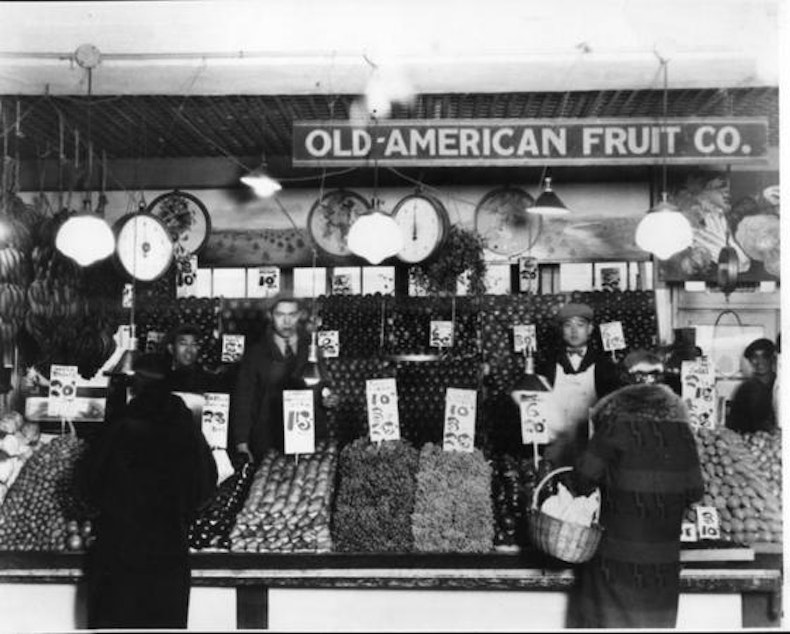A little known dark episode in Seattle's Pike Place Market

Seattle turns 150 years old this year. To mark this major milestone, the city picked 150 objects from its archives that tell the story of the region’s early years.
One of them highlights a little known dark episode in the city’s beloved icon, Pike Place Market.
When Pike Place Market opened in 1907, Seattle was still a rough and tumble kind of city. It was the marketplace where people could buy produce directly from farmers. But who got to sell at the market was a thorny issue.
Seattle City archivist Anne Frantilla read a typewritten letter from the farmers to me: “Gentlemen, we the undersigned Japanese farmers hereby enter our protest against the change in the system of distributing booths at Pike Place Public Market…”
We were in the research room in City Hall where the letter and other archives are housed. The city’s stories live here.
“That’s actually how I think about everything in the archives, as just this huge collection of voices,” Frantilla said.
The letter was dated November 25, 1914. It was signed DT Inouye, Y. Sugiyama, T. Aoyama, and 69 other farmers. They were complaining about the market’s system for assigning stalls, giving preference to whites. It meant fewer Japanese got in. Those who did get in wound up in the least desirable part of the market.
Sponsored
The letter didn’t change their situation.
“We know that several letters were written to City Council,” Frantilla said. “Most of them on the back [said] that they were simply placed on file, which meant that they probably didn’t take action on them.”
The Japanese farmers were part of the second wave of Asian immigrants to Seattle. Chinese people came first.
They worked in a variety of jobs. Soon Anti-Chinese sentiments led to the federal Chinese Exclusion Act.
Japanese men came to Seattle to fill the labor void. But when they arrived in the 1890s, the environment wasn’t welcoming.
Sponsored
“You see it over and over again where you can say on the one hand, you don’t want people to come to your community, but you need those people," said Jennifer Ott, assistant director of Historylink.org and a collaborator on the project.
Federal and state laws didn’t allow Japanese newcomers to own or lease land. They ended up working for white landowners.
“The Japanese Americans would serve as the farm managers,” she explained. “They essentially farmed the land and they brought their expertise in farming to the region. They mostly settled in the Duwamish Green River Valley, in the Puyallup River Valley.”
The Japanese farmers managed to thrive despite the institutional barriers. Ott said they supplied 75 percent of the produce sold at the market.
That abruptly ended in 1942 when President Franklin Roosevelt signed the executive order that led to the forced incarceration of more than 112,000 people of Japanese descent.
Sponsored
“It’s very stark after their removal that the stalls are just empty," Ott said.
The market today continues to bustle with vendors, shoppers and visitors.
Zach Cook, the market’s farm program manager, said farmers get first choice of space. The stalls are assigned based on seniority and everyone has a say at the market.
“If you live in the market, if you work in the market, if you’re a permit holder, if you’re a staff member, you can submit a rule change proposal to change one of rules," he said.
Cook said that opportunity happens every year. It’s a far cry from the market’s early history.
Sponsored
And these days farmers who sell at the stalls are diverse.
“A lot of the flower farmers that we have are ethnic Hmong farmers,” Cook said. “And then the second section up here we have a lot of Filipino farmers who’ve actually been here much longer than the Hmong farmers… and then we have a lot of Eastern Washington vegetable farmers that are run by Hispanic farmers that are from Central America or South America.”
But you won’t find descendants of the Japanese farmers. After the war, most families lost their homes and businesses.
Many never returned. There’s an art mural at the market’s main entrance honoring their legacy.




